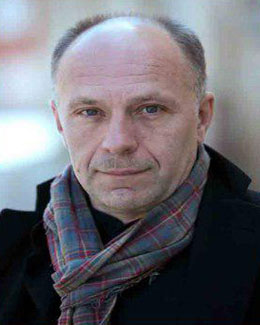
Born in 1963 Prof. Almantas Samalavicius is an architectural historian, aesthetician, and urban researcher as well as literary scholar. He is a professor at the school of Architecture, Vilnius Gediminas Technical University where he teaches architectural criticism, aesthetics of architecture, city culture and urban studies in MA programs and supervises doctoral dissertations. Simultaneously he is a professor at the Department of English, Vilnius University.
He is an author of some 12 scholarly books as well as editor of 11 collections of essays and academic articles and anthologies published in Lithuania, UK, and USA. His interests as a writer range from Baroque architecture and history of architectural ideas to urban theories of the modern period as well as cultural, architectural and literary criticism. Last but not least he is the author of two acclaimed books on the problems and history of higher education published in Lithuania.
In addition, he is editor-in-chief of the Journal of Architecture and Urbanism (Taylor and Francis/Routledge) and Chicago-based Lituanus: the Lithuanian Quarterly. He has previously served as president of Lithuanian PEN and continues to sit on its board.
His books, essays, and articles have been translated into some 14 languages and were awarded 8 prizes in his home country.
Further Information
Ph.D. in Art History and Theory, Professor of Literary Theory and Cultural Studies
Research interests:
- Architectural History and Theory
- Aesthetics of Architecture
- Lithuanian Baroque architecture
- Urban Studies
- Modern Lithuanian Literature
- Postcolonialism
Books
Lithuanian Architecture and Urbanism: Essays in History and Aesthetics

Almantas SAMALAVICIUS. Lithuanian Architecture and Urbanism: Essays in History and Aesthetics. Newcastle upon Tyne, U.K.: CSP, 2019, 195 pp.
This volume contains a collection of essays focused on Lithuania’s architectural and urban legacy as well as recent developments since 1990 when the country said a firm farewell to the era of dependence and the Soviet communist regime. Nevertheless, the author argues, the legacy of the past still continues due to an uncritical adoption of Modernist dogmas in architecture and urban design by architects and urban designers during the last two decades of Soviet colonization. Unlike other artists, architects were allowed to embrace the ideology and aesthetics of Modernism under Soviet colonization because it enabled the ruling regime to distort and destroy the visible historical heritage and offer its own vision of the past and the future. The book also offers a few glimpses at Lithuanian architectural tradition going back to the Baroque.
The author offers a critical overview of urban developments during the last three decades that were marked by the emergence of private capital, market economy and the growth of the real estate sector. The rapid expansion of the building industry brought new challenges to architects and urban designers and more often than not they fell prey to the new ideology of economism, commodification and commercialism. These developments are reflected in the urban tissue and urban aesthetics as well as in the present shape of urban public spaces in Lithuania’s capital Vilnius and other large cities. This book might be useful to architectural and cultural historians as well as to critics interested in current developments and historical trends in eastern Europe and in specifically Baltic urban and architectural developments.
Neoliberalism, Economism, and Higher Education
This concise volume presents a series of conversations conducted by its editor with internationally renowned educators, scholars and social critics. The primary focus is on a set of important social and cultural issues and the complex nature of the global contemporary crises in higher education and economics, and the values and goals educational institutions pursue and produce. Contributors to this volume discuss why the present systems of higher education are ailing almost everywhere, and which remedies have turned out to be their poison.
The contributions here investigate how and why universities and the knowledge they seek have become hostages to an ideology based on neoliberalism, economism and fundamentalism of the market. These ideologies have reshaped higher education and contributed to its commodification and commercialization, transforming educational institutions according to a model that originated in the domains of global business enterprises. Bureaucratization and the growth of a managerial class in higher education have led to universities that focus on what is purportedly marketable while neglecting the commitment to the pursuit of truth, the education of character and the cultivation of civic values that informed older educational models.
Nuo nekropolio iki akropolio
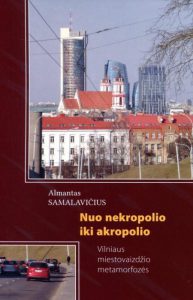
Nuo nekropolio iki akropolio: Vilniaus miestovaizdžio metamorfozės (From Necropolis to Acropolis: The Metamorphosis of Vilnius’ Cityscape), Vilnius: Kulturos barai, 2017, 192 p. (in Lithuanian).
The book contains 16 essays focused on transformation of cityscape of Lithuania’s capital city, Vilnius, as well as discussion of other aspects of visual transformation of former urban symbols, analysis of how new these visual symbols of consumer culture take over the historical ones and what new meaning they create; several essays are focused on problems of transformation of urban spaces that lack character and relation to genius loci (or spirit of the place). Developing tradition of architectural and urban criticism offered by Lewis Mumford and Jane Jacobs the author of the book provides a fresh and novel view at the cityscape, urban structure and public spaces of Vilnius city. The essays are accompanied by photos taken by the author.
Rethinking Modernism and the Built Environment

Rethinking Modernism and the Built Environment, edited by Almantas Samalavicius, Newcastle upon Tyne: Cambridge Scholars Publishing, 2017, 226 p.
This volume is a passionate scholarly inquiry focused on some of the most pressing issues confronting contemporary architectural practice, urbanism and city-making. Presented in a form of conversations with leading and internationally renowned architects, architectural and urban historians, urban designers, urban sociologists and anthropologists and other experts and social thinkers, it offers a critique of the legacy of Modernism and revises its impact upon global urbanization and architectural as well as urban design. The book includes the editor’s introductory essay and his conversations with Witold Rybczynski, Kenneth Frampton, Alberto Perez-Gomez, Leon Krier, Nikos Salingaros, Arnold Berleant, Harry Francis Mallgrave, Roger Scruton, James Howard Kunstler, Nan Elin, etc.).
Miesto kultūra

Miesto kultūra. Vilnius: Technika, 2008, 88 p. (City Culture, in Lithuanian)
A texbook written in an essay format introduces the notion of city culture as well as various ideas and concepts of a city that emerged in different historical periods in Western Europe. In particular the book is focused on the development of an idea of city in the ancient Rome, Middle Ages, Renaissance and the Modern period. The author briefly discusses ideas on the city presented by such divrese utopian and urban thinkers as Robert Owen, John Silk Buckingham, Ebenezer Howard, San‘t Elia, Le Corbuzier, Frank Lloyd Wright, R. Buckminster Fuller, Constantinos Doxiadis, Paul and Percival Goodman and Lewis Mumford. The textbook is accompanied with relevant images as well as suggestions for further reading and control questions.
Miestas ir protas
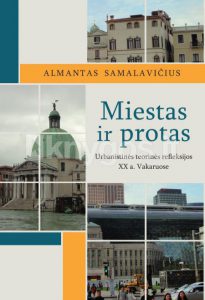
Miestas ir protas, Vilnius: Technika, 2013, 160 p. (City and Mind, in Lithuanian)
The monograph is a discussion of urban thinking and concepts of urbanism offered in the 20th century by leading urban thinkers, planners and urban designers. The author discusses he origins of Modern urbanism and its relation to Modern imagination. Critical discussion of urban concepts introduced by Camillo Sitte, Ebenezer Howard, Le Corbusier, Lewis Mumford, Constantinos Doxiadis, Kevin Lynch, Jane Jacobs, Christian Norberg-Schultz is provided as well as analysis of a more recent concepts of the “city of consumption” offered by Malcolm and Steven Miles, “creative city” by Charles Landry, idea of homo creativus and its effect upon understanding urbanism by Richard Florida, ideas of green city (Herbert Girardet) and integral urbanism (Nan Ellin) are overviewed by the author in relation to the most pressing issues of contemporary urbanism.
The Dedalus Book of Lithuanian Literature
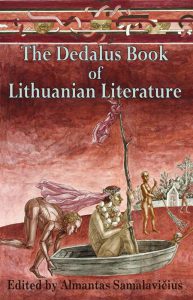
Dedalus Book of Lithuanian Literature, edited by Almantas Samalavičius, Sawtry, Cambs, UK: Dedalus Limited, 2013, 250 p.
Featuring the nation‘s greatest novelists and short storytellers, The Dedalus Book of Lithuanian Literature shows how Lithuanian prose writers have reflected the country‘s development from an agrarian society to its ability to survive the worst ideologies of the 20 century. The volume contains some 19 short stories and excerpts of novels documenting the development of Lithuanian literature since the early 20th to the 21st century. The only anthology of Lithuanian writing covering the rise and development of modern Lithuanian literature in English translation is compiled, edited and introduced by literary scholar and critic Almantas Samalavičius.
Vilniaus Šv. Petro ir Povilo bažnyčia

Vilniaus Šv. Petro ir Povilo bažnyčia, Vilnius: Vilniaus pilys, 1998, 2016 p. (Vilnius SS.Peter and Paul‘s Church, with Dr. Stasys Samalavičius, in Lithuanian)
The monograph co-written with the author‘s father Dr. Stasys Samalavičius analyzes the history and aestehtic value of Lithuania‘s most important Baroque structure. The book discusses the history of building and its restorations, the artistic work (stucco decorations) of Italian sculptors Pietro Perti and Giovanni Maria Galli as well as the idocographic program of its stunning interior decoration. Placed within the context of the 17th century cultural and historical developments it is the study of the making of Lithuanian Baroque architecture strongly influenced by Italian Baroque masters.



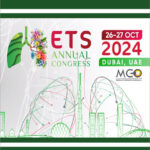
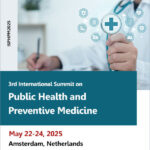

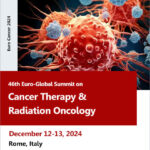
A great work of architecture, culture and beauty!